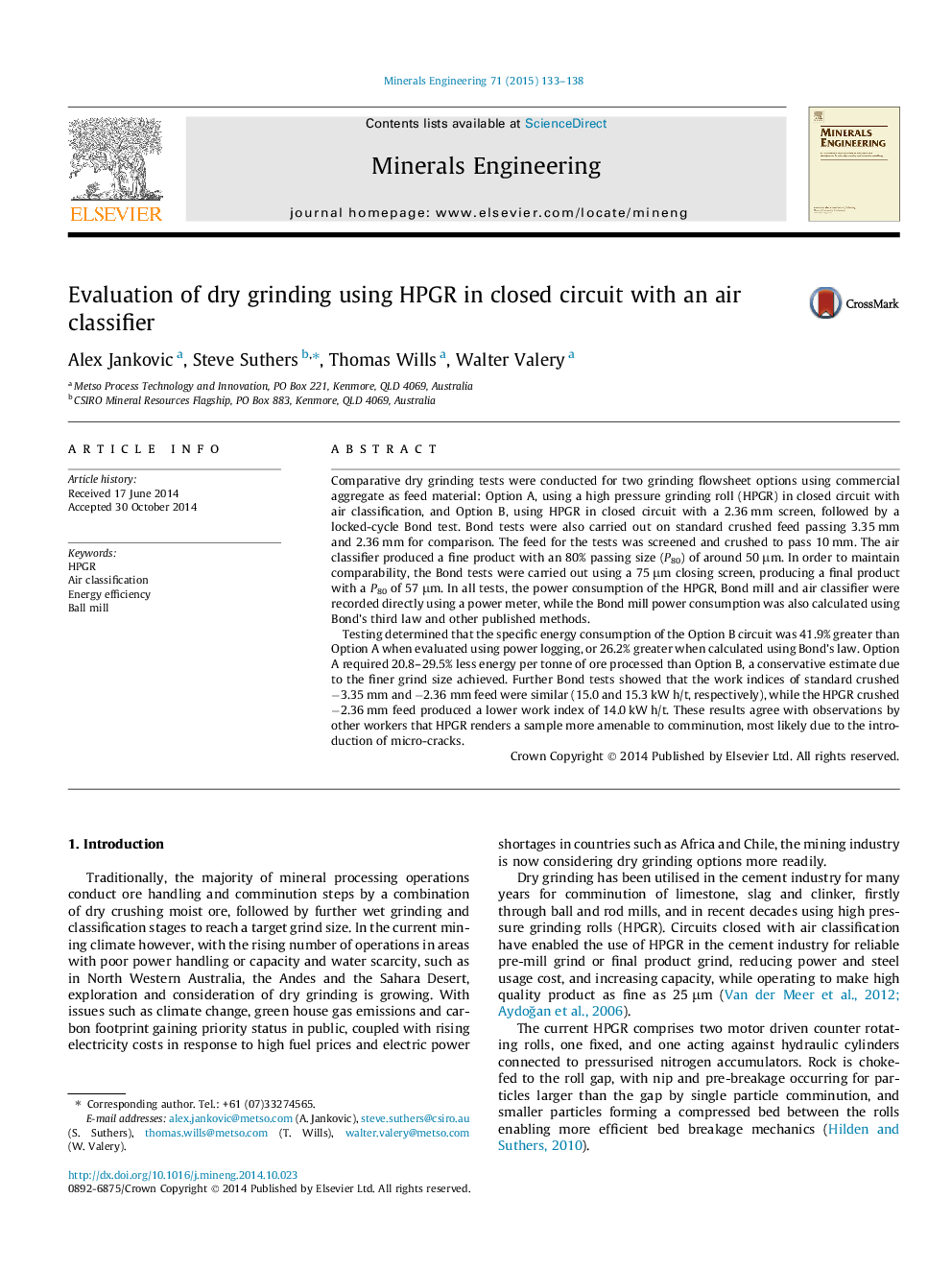| Article ID | Journal | Published Year | Pages | File Type |
|---|---|---|---|---|
| 6673035 | Minerals Engineering | 2015 | 6 Pages |
Abstract
Testing determined that the specific energy consumption of the Option B circuit was 41.9% greater than Option A when evaluated using power logging, or 26.2% greater when calculated using Bond's law. Option A required 20.8-29.5% less energy per tonne of ore processed than Option B, a conservative estimate due to the finer grind size achieved. Further Bond tests showed that the work indices of standard crushed â3.35Â mm and â2.36Â mm feed were similar (15.0 and 15.3Â kWÂ h/t, respectively), while the HPGR crushed â2.36Â mm feed produced a lower work index of 14.0Â kWÂ h/t. These results agree with observations by other workers that HPGR renders a sample more amenable to comminution, most likely due to the introduction of micro-cracks.
Related Topics
Physical Sciences and Engineering
Chemical Engineering
Chemical Engineering (General)
Authors
Alex Jankovic, Steve Suthers, Thomas Wills, Walter Valery,
